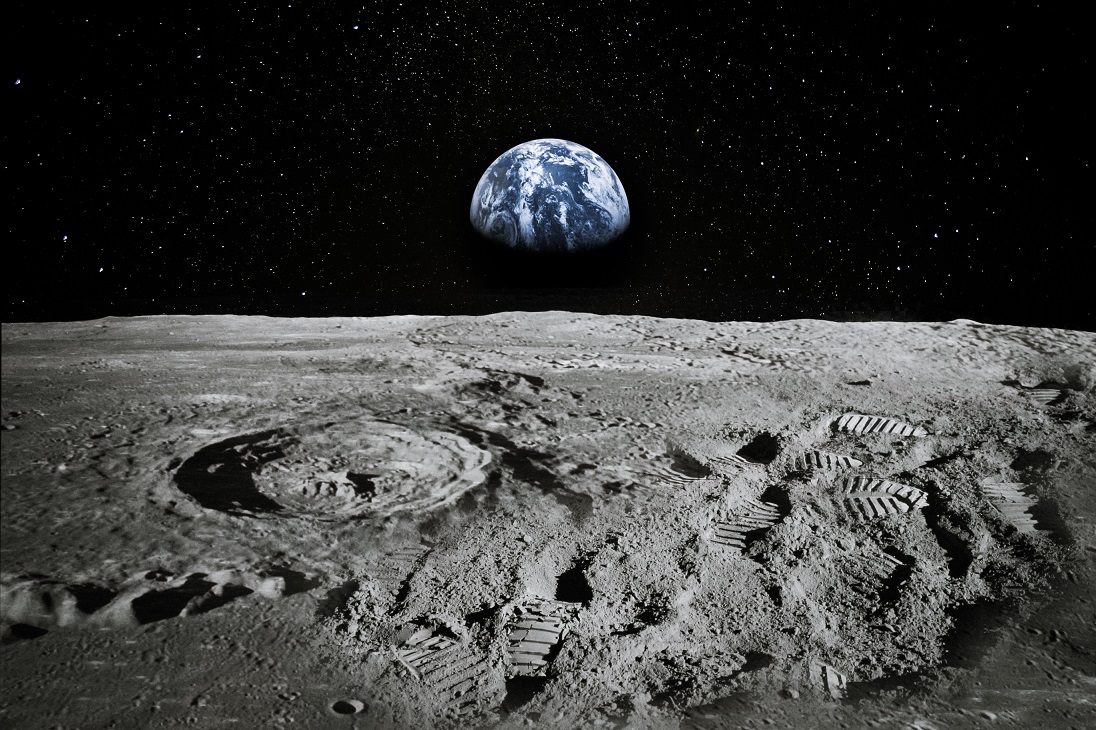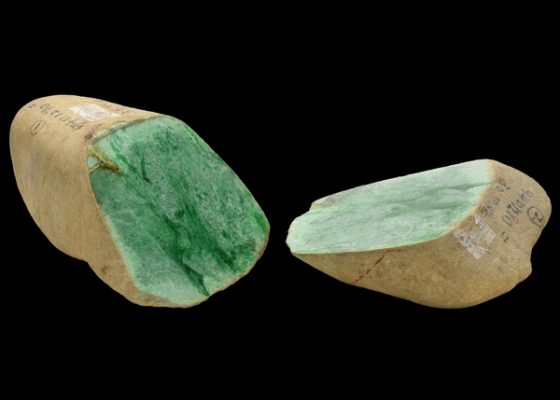
- October 3, 2025

By Staff Middle Land
By Neel V. Patel
July 20, 1969 marked the 50th anniversary of the Apollo 11 moon landing, the first time in history that humans set foot on an extraterrestrial world. But half a century later, Earth’s only natural satellite remains an unknown place to us, and its history and geology remain puzzling, largely because we haven’t been back since 1972.
All of that is poised to change in the next decade as NASA and its partners ramp up new efforts to return, with an eye on staying permanently this time. With new ways of collecting data and new methods for analyzing it, some of our long-standing questions might soon have answers. Here are six of the biggest scientific mysteries about the moon still waiting to be cracked.
The Origin of the moon
“The fundamental question of how the moon formed, and how that relates to the Earth, is really the most important of the unknowns.” says Noah Petro, a research scientist at NASA’s Goddard Spaceflight Center in Greenbelt, Maryland, and a project scientist for the Lunar Reconnaissance Orbiter. “Everything else comes after that.”
You can thank Apollo 11 for giving us our first insight into that mystery. The mission brought back 50 pounds worth of moon rocks and initiated decades’ of investigations focused on learning how the moon formed and evolved. “I can’t understate the importance of getting those first samples back from Apollo 11,” says Petro. “They set the stage for our entire understanding of the moon.”
Scientists used them to come up with the strongest existing model: that the moon began as a magma ocean—a giant ball of molten lava—orbiting Earth. This in turn led, decades later, to the hypothesis that the moon was borne out of Earth itself, when a giant impact with a Mars-sized object ejected debris into orbit. Further studies of the rock show the material that formed the moon also formed our own planet, adding more support to this idea.
That’s the most widely accepted hypothesis for the origin of the moon, but it’s by no means perfect. There is no way yet to confirm a giant impact created the moon, and our sense of how the magma ocean cooled down into the dry, gray rock we see now is still very hazy. About 10 years ago, we discovered evidence of water on the moon—something that’s a bit difficult to reconcile with an impact hypothesis. Getting to the bottom of the moon’s past requires the sort of on-the-ground work we’ve done to unravel Earth’s own history.
Water on the Moon
There’s water on the moon, and we’re not just talking about a little sprinkling of interstellar H2O—we’re talking about troves and troves of water-ice that could be sitting just beneath the surface, especially at the lunar poles. This water could be harvested to help generate a new form of spacecraft fuel or used to help sustain a future lunar colony.
How did all that water-ice get there? Nobody really knows yet. Theories range from outgassing reactions that pushed water embedded in the interior out toward the surface, to meteorite impacts and cometary bombardments that delivered the water from outer space, to chemical interactions catalyzed by solar wind. “We just don’t know,” says Petro. “And we’d certainly like to find out.”
Moonquakes
There are earthquakes happening on the moon pretty frequently—otherwise known as moonquakes. Apollo-era seismometers installed on the surface measured these shakes from 1969 to 1977. That data has shown us that the moon is an active body, a far cry from the stale lifeless rock many assume it is.
We’re already aware of a few phenomena that cause these quakes, like thermal expansion, tidal stress induced by Earth’s gravity, and meteorite impacts. But with such limited data, we’re not entirely sure how these processes work and exactly how the quakes behave. Moreover, there are other, shallower moonquakes without any obvious cause, which seem to be occurring more recently than the others. Petro suggests a global seismic network installed around the moon would be tremendously helpful in helping understand the trigger mechanisms behind all this tectonic activity. Such a network could cleanly identify exactly when these events occurred, where they originated from, and the effect they have on the rest of the moon. The 50-year-old data we’re using now won’t be enough to give us any good answers.
Tidal Locking
There’s a reason we’ve only ever seen one side of the moon. It’s tidally locked, which means only one side of it faces Earth. This is not uncommon for moons in our solar system, but it’s still unclear exactly when this occurs, what conditions encourage it, and how it happens. In Petro’s mind, this mystery of tidal locking harkens back to the question of the origin of the moon, and what was happening in early lunar history. It’s another piece of the 4-billion-year puzzle.
This mystery isn’t just local to the moon, either. As we continue to find more planets and moons outside of our solar system, it’s important to figure out what sort of factors help incite features like tidal locking, and decide whether potentially habitable worlds, like the TRAPPIST-1 exoplanets, really are hospitable to life.
South Pole-Aitken Basin Anomaly
One enigma that’s sprung up only recently has to do with the discovery that something massive is lurking underneath the south pole of the moon, below the largest impact crater ever made in the entire solar system. Scientists have no idea what it could be, but it’s certainly big enough to affect the gravitational force exerted by the moon’s mass.

Predominant theories suggest it’s some sort of heavy metal body from a projectile that impacted the surface a long time ago, but this is far from certain. And it’s hard to understand what this mass is doing suspended underground: We know the moon’s interior is still active to some degree (e.g. moonquakes), and heat should have caused this mass to shift around instead of staying trapped like Han Solo in carbonite.
“It raises questions we’re just not able to answer yet,” says Petro. “I’ve been working for a number of years to try to get a mission together to study and sample the Aitken Basin, to study it directly. Just knowing its age would be a great place to start.”
Volcanoes on the Moon
We don’t see volcanoes erupting on the moon these days. But research suggests lunar volcanoes were active within the last 100 million years, and on the scale of the cosmos, that may as well have been last week. The problem is, we just don’t know enough about volcanism on the moon to determine what this activity was actually like and what it did to the moon’s geology. Different lunar rocks and observations based on orbiter imaging give weight to various attempts to explain this history. Some surfaces seem younger than others, and we’re not sure why. It all comes down to a need for fresh lunar samples.
The implications stretch beyond just learning more about the moon. Petro suggests that if we’re able to assess exactly how young a surface on the moon really is, we can use that knowledge to make predictions of how old the surfaces on other celestial bodies are, from Mercury to MU69. In turn, this could give us a better understanding of the solar system’s history. The moon is really just a small step toward the giant leap of unraveling the origin of everything we know.
Original article: Popular Science










Cancel anytime


Using our website
You may use the The Middle Land website subject to the Terms and Conditions set out on this page. Visit this page regularly to check the latest Terms and Conditions. Access and use of this site constitutes your acceptance of the Terms and Conditions in-force at the time of use.
Intellectual property
Names, images and logos displayed on this site that identify The Middle Land are the intellectual property of New San Cai Inc. Copying any of this material is not permitted without prior written approval from the owner of the relevant intellectual property rights.
Requests for such approval should be directed to the competition committee.
Please provide details of your intended use of the relevant material and include your contact details including name, address, telephone number, fax number and email.
Linking policy
You do not have to ask permission to link directly to pages hosted on this website. However, we do not permit our pages to be loaded directly into frames on your website. Our pages must load into the user’s entire window.
The Middle Land is not responsible for the contents or reliability of any site to which it is hyperlinked and does not necessarily endorse the views expressed within them. Linking to or from this site should not be taken as endorsement of any kind. We cannot guarantee that these links will work all the time and have no control over the availability of the linked pages.
Submissions
All information, data, text, graphics or any other materials whatsoever uploaded or transmitted by you is your sole responsibility. This means that you are entirely responsible for all content you upload, post, email or otherwise transmit to the The Middle Land website.
Virus protection
We make every effort to check and test material at all stages of production. It is always recommended to run an anti-virus program on all material downloaded from the Internet. We cannot accept any responsibility for any loss, disruption or damage to your data or computer system, which may occur while using material derived from this website.
Disclaimer
The website is provided ‘as is’, without any representation or endorsement made, and without warranty of any kind whether express or implied.
Your use of any information or materials on this website is entirely at your own risk, for which we shall not be liable. It is your responsibility to ensure any products, services or information available through this website meet your specific requirements.
We do not warrant the operation of this site will be uninterrupted or error free, that defects will be corrected, or that this site or the server that makes it available are free of viruses or represent the full functionality, accuracy and reliability of the materials. In no event will we be liable for any loss or damage including, without limitation, loss of profits, indirect or consequential loss or damage, or any loss or damages whatsoever arising from the use, or loss of data, arising out of – or in connection with – the use of this website.
Last Updated: September 11, 2024
New San Cai Inc. (hereinafter “The Middle Land,” “we,” “us,” or “our”) owns and operates www.themiddleland.com, its affiliated websites and applications (our “Sites”), and provides related products, services, newsletters, and other offerings (together with the Sites, our “Services”) to art lovers and visitors around the world.
This Privacy Policy (the “Policy”) is intended to provide you with information on how we collect, use, and share your personal data. We process personal data from visitors of our Sites, users of our Services, readers or bloggers (collectively, “you” or “your”). Personal data is any information about you. This Policy also describes your choices regarding use, access, and correction of your personal information.
If after reading this Policy you have additional questions or would like further information, please email at middleland@protonmail.com.
PERSONAL DATA WE COLLECT AND HOW WE USE IT
We collect and process personal data only for lawful reasons, such as our legitimate business interests, your consent, or to fulfill our legal or contractual obligations.
Information You Provide to Us
Most of the information Join Talents collects is provided by you voluntarily while using our Services. We do not request highly sensitive data, such as health or medical information, racial or ethnic origin, political opinions, religious or philosophical beliefs, trade union membership, etc. and we ask that you refrain from sending us any such information.
Here are the types of personal data that you voluntarily provide to us:
As a registered users or customers, you may ask us to review or retrieve emails sent to your business. We will access these emails to provide these services for you.
We use the personal data you provide to us for the following business purposes:
Information Obtained from Third-Party Sources
We collect and publish biographical and other information about users, which we use to promote the articles and our bloggers who use our sites. If you provide personal information about others, or if others give us your information, we will only use that information for the specific reason for which it was provided.
Information We Collect by Automated Means
Log Files
The site uses your IP address to help diagnose server problems, and to administer our website. We use your IP addresses to analyze trends and gather broad demographic information for aggregate use.
Every time you access our Site, some data is temporarily stored and processed in a log file, such as your IP addresses, the browser types, the operating systems, the recalled page, or the date and time of the recall. This data is only evaluated for statistical purposes, such as to help us diagnose problems with our servers, to administer our sites, or to improve our Services.
Do Not Track
Your browser or device may include “Do Not Track” functionality. Our information collection and disclosure practices, and the choices that we provide to customers, will continue to operate as described in this Privacy Policy, whether or not a “Do Not Track” signal is received.
HOW WE SHARE YOUR INFORMATION
We may share your personal data with third parties only in the ways that are described in this Privacy Policy. We do not sell, rent, or lease your personal data to third parties, and We does not transfer your personal data to third parties for their direct marketing purposes.
We may share your personal data with third parties as follows:
There may be other instances where we share your personal data with third parties based on your consent.
HOW WE STORE AND SECURE YOUR INFORMATION
We retain your information for as long as your account is active or as needed to provide you Services. If you wish to cancel your account, please contact us middleland@protonmail.com. We will retain and use your personal data as necessary to comply with legal obligations, resolve disputes, and enforce our agreements.
All you and our data are stored in the server in the United States, we do not sales or transfer your personal data to the third party. All information you provide is stored on a secure server, and we generally accepted industry standards to protect the personal data we process both during transmission and once received.
YOUR RIGHTS/OPT OUT
You may correct, update, amend, delete/remove, or deactivate your account and personal data by making the change on your Blog on www.themiddleland.com or by emailing middleland@protonmail.com. We will respond to your request within a reasonable timeframe.
You may choose to stop receiving Join Talents newsletters or marketing emails at any time by following the unsubscribe instructions included in those communications, or you can email us at middleland@protonmail.com
LINKS TO OTHER WEBSITES
The Middle Land include links to other websites whose privacy practices may differ from that of ours. If you submit personal data to any of those sites, your information is governed by their privacy statements. We encourage you to carefully read the Privacy Policy of any website you visit.
NOTE TO PARENTS OR GUARDIANS
Our Services are not intended for use by children, and we do not knowingly or intentionally solicit data from or market to children under the age of 18. We reserve the right to delete the child’s information and the child’s registration on the Sites.
PRIVACY POLICY CHANGES
We may update this Privacy Policy to reflect changes to our personal data processing practices. If any material changes are made, we will notify you on the Sites prior to the change becoming effective. You are encouraged to periodically review this Policy.
HOW TO CONTACT US
If you have any questions about our Privacy Policy, please email middleland@protonmail.com
The Michelin brothers created the guide, which included information like maps, car mechanics listings, hotels and petrol stations across France to spur demand.
The guide began to award stars to fine dining restaurants in 1926.
At first, they offered just one star, the concept was expanded in 1931 to include one, two and three stars. One star establishments represent a “very good restaurant in its category”. Two honour “excellent cooking, worth a detour” and three reward “exceptional cuisine, worth a
Thank you for your participation,
please Log in or Sign up to Vote

123Sign in to your account